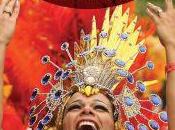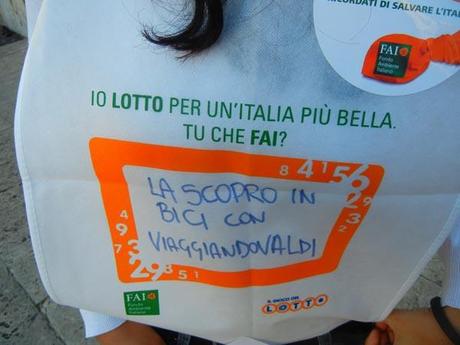
Le Donne di Roma era il tema scelto dalla Delegazione di Roma per la FAIMARATHON organizzata dal FAI (Fondo Ambiente Italiano: http://www.fondoambiente.it/) il 21 Ottobre.
The Roman Women was the subject choosen by the Roman Delegation for the FAIRMARATHON, organized by the FAI (Fondo Ambiente Italiano: http://www.fondoambiente.it/) the 21st October.

Si è svolta in ben 70 città italiane la maratona culturale che si proponeva di “mettere in luce la bellezza che non siamo abituati ad osservare: quella dei luoghi in cui viviamo”.
Un buon motivo per una passeggiata in una splendida giornata di sole e un una buona occasione per gironzolare per la città con gli occhi all’insù!
15 le tappe della Maratona Romana…eccole qua:
Ore 10:00 pronti per la partenza…ultimi preparativi..
It took place in 70 Italian cities the cultural marathon which aimed to “highlight the beauty that we are not accustomed to observe: that of the places in which we live.”
A good reason for a stroll on a beautiful sunny day and a good opportunity to wander around the city with the eyes up!
15 stages of the Marathon…here they are:
10:00 am ready to start…
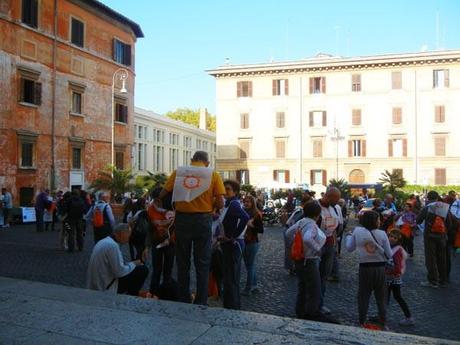
1- Partenza/Arrivo in Piazza San Francesco d’Assisi (Trastevere)
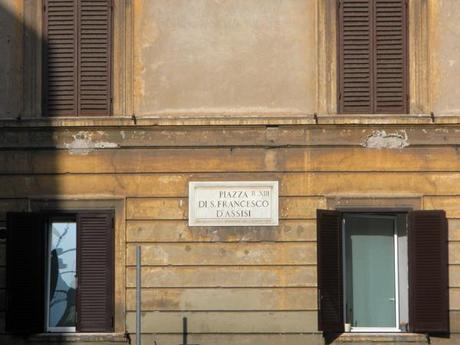
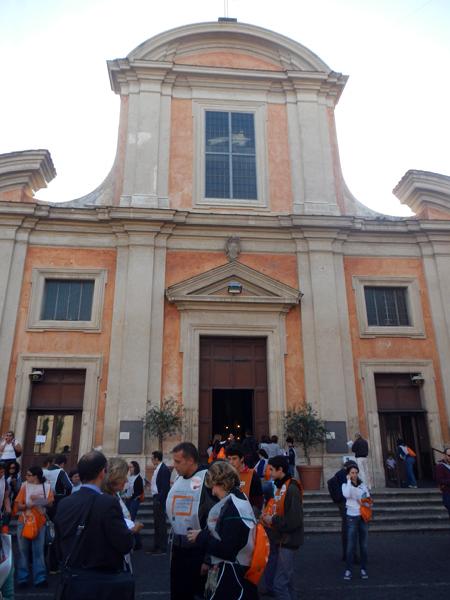
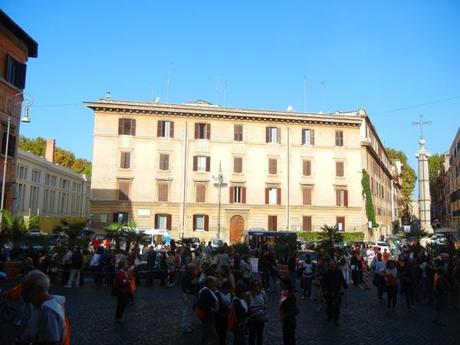
Ludovica Albertoni è la prima protagonista femminile che incontriamo al VIA della maratona.
Dopo la morte nel 1533, divenne oggetto di spontanea devozione per la sua generosità verso i bisognosi durante il Sacco di Roma del 1527, e per gli episodi di estasi e lievitazione che le vennero attribuiti. Fu beatificata nel 1671, epoca in cui la chiesa voleva incentivare le visioni mistiche. Nella chiesa San Francesco a Ripa potrete ammirare, appunto, “L’Estasi della Beata Ludovica Albertoni”, opera del Bernini che interpretò l’estasi cristiana con la tipica teatralità barocca, raffigurando la Beata giacente su un materasso.
Ludovica Albertoni is the first female protagonist who meet starting the marathon.
After his death in 1533, she became the subject of spontaneous devotion for his generosity during the sack of Rome in 1527, and for episodes of ecstasy and proving that she was awarded. She was beatified in 1671, a time when the church wanted to stimulate the mystical visions. In the church of San Francesco a Ripa can see, in fact, “The Ecstasy of the Blessed Ludovica Albertoni” by Bernini who rapresented the ecstasy Christian with the typical baroque theatricality, depicting the Blessed lying on a mattress.
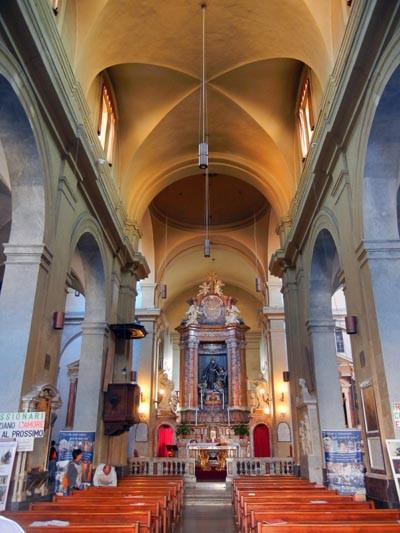
2- Piazza S. Maria in Trastevere
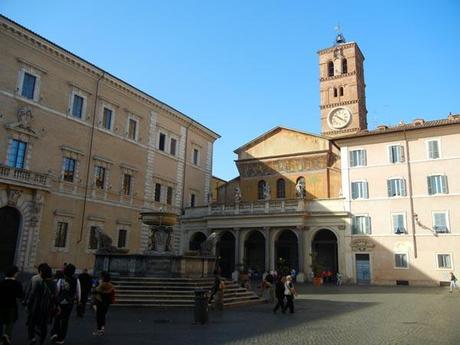
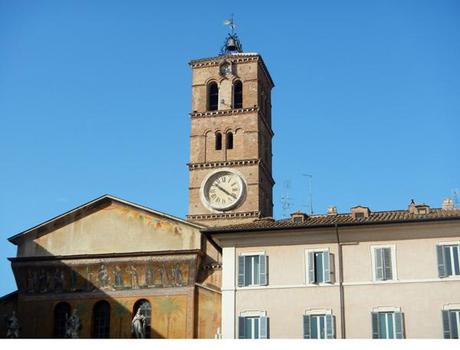
This famous square, heart of Trastevere, takes its name from the first church of Christianity dedicated to the Virgin, built in the third century d.C. on the area of a tavern meritorious (barracks for war veterans), visible inside the church, in one of the mosaics of the apse. As the story goes,in 38 a.C. in that place, a gush of oil (source solei) overflowed on the floor that spread to the Tiber. According to the Christian interpretation, the “miracle” foretold the birth of Jesus. However, According to the laic interpretation it was just a regurgitation of water Alsietina, not drinking. Inside the church a plaque marks the spot gush.
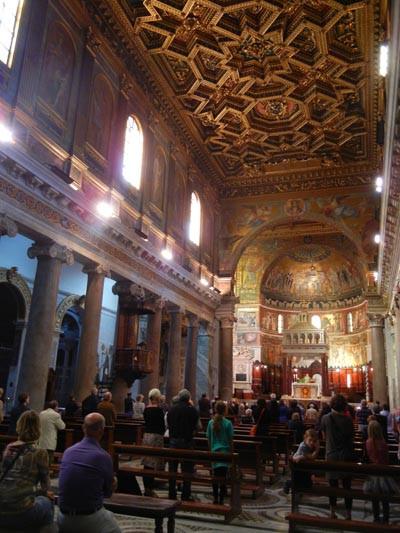
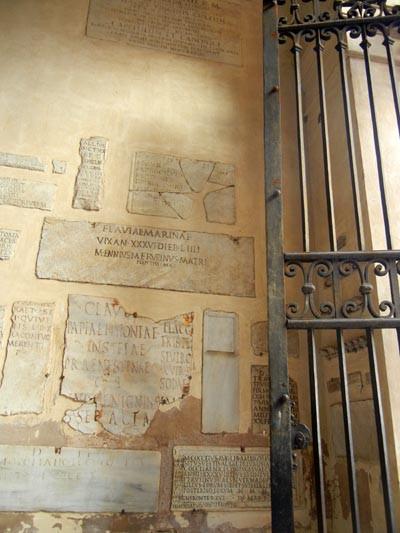
3- Palazzo Corsini e Villa Farnesina
Addentrandoci per Trastevere, arriviamo a Via della Lungara dove troviamo Palazzo Corsini e Villa Farnesina.
Walking around Trastevere, we arrived in Via della Lungara where there is Palazzo Corsini and Villa Farnesina.
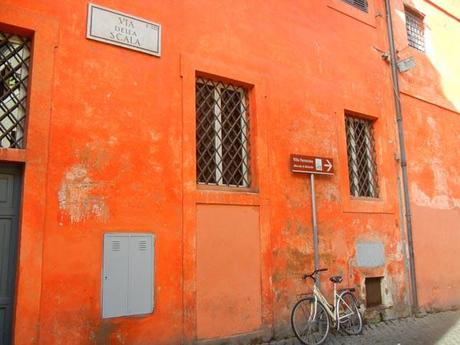

Protagoniste di questa terza tappa sono: l’ex regina Cristina di Svezia e la famosa Fornarina.
La prima, intelligente, anticonformista, e molto “chiacchierata”, fu per Roma una vera regina. La sua passione per la vita culturale della città fu un grande impulso per lo sviluppo della stessa. Nel ‘600, dopo che abdicò per non sposarsi e abiurò per scansare i rigori del luteranesimo, Palazzo Corsini divenne la sua dimora.
The protagonists of this third stop are: the ex-Queen Christina of Sweden and the famous Fornarina.
The first, intelligent, unconventional, and very “talk,” was a great queen for Rome. Her passion for the cultural life of the city was a real impetus for the development of the same. In ’600, after she abdicated to marry and not abjured to avoid the rigors of Lutheranism, Palazzo Corsini became her home.
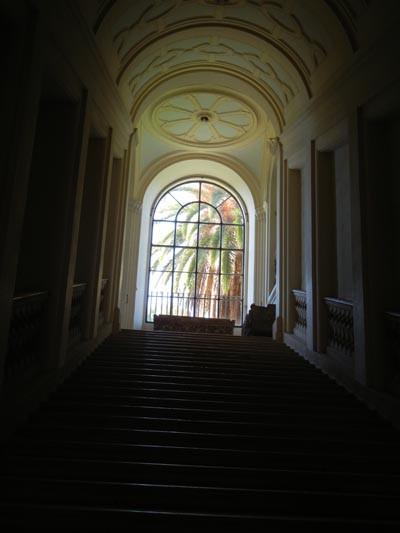
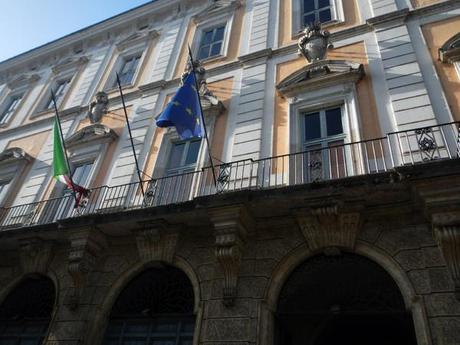
Fornarina, invece, è legata alla storia di Villa Farnesina che, situata esattamente di fronte al Palazzo e costruita nel ‘500, rappresenta il primo esempio di villa suburbana.
La donna, infatti, per via del suo legame con Raffaello, chiamato da Agostino Chigi, per affrescare la villa, venne a lungo ospitata nella sontuosa residenza. Pare infatti che l’artista non riusciva a dipingere senza avere accanto la sua amata.
Fornarina, however, is linked to the history of Villa Farnesina which, located just in front of the Palace and built in 500, is the first example of a suburban villa.
The woman, in fact, because of its relationship with Raffaello, called by Agostino Chigi, to paint the villa, was long housed in the sumptuous residence. It seems that the artist could not paint without having beside his beloved.
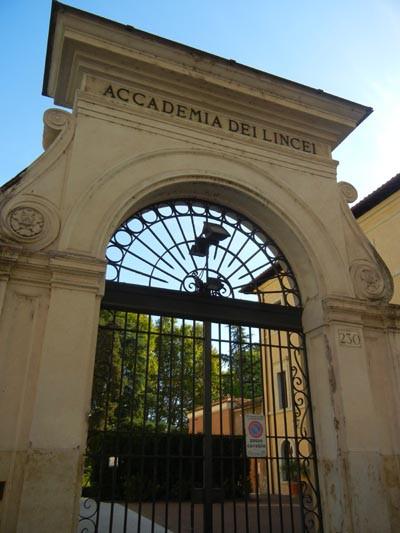
4- Piazza Capo di Ferro
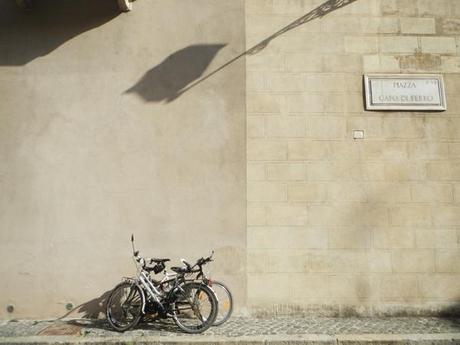
“Unica donna in Italia che abbia mai saputo di pittura”. È Artemisia Gentileschi, simbolo del femminismo internazionale negli anni ’70. Figlia e allieva di Orazio G. , stuprata dal pittore Agostino Tassi, condusse una vita piuttosto travagliata, battendosi di continuo per l’indipendenza artistica.
Palazzo Spada che ospita due quadri della donna, fu restaurato da Borromini che realizzò la splendida Galleria prospettica.
“The only woman in Italy who ever knew about painting.” She is Artemisia Gentileschi, a symbol of international feminism in the 70s. Daughter and disciple of Horace G., raped by the painter Agostino Tassi,she led a life quite difficult, fighting continuously for artistic independence.
In the Palazzo Spada there are two paintings of Artemisia. It was restored by Borromini who created the splendid Perspective Gallery.
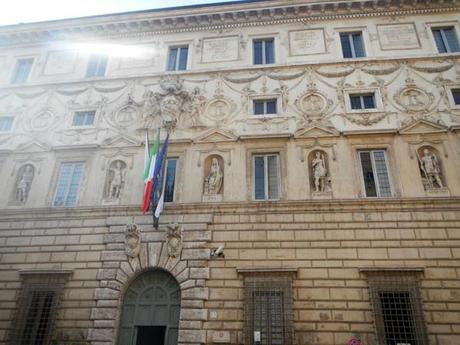
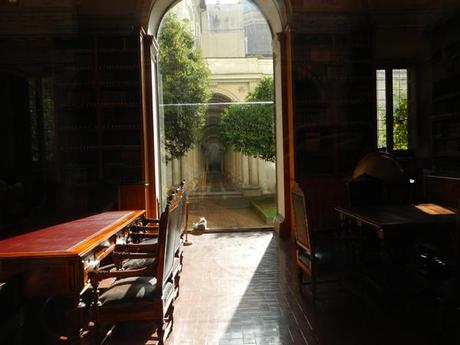
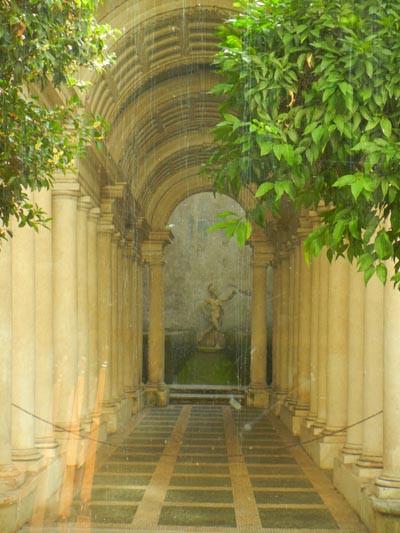
Pare che appartenga all’artista anche la Fontana delle Mammelle posta di fronte all’ingresso del Palazzo.
It seems that the artist also belongs the Fountain of Breasts opposite the entrance of the Palace.
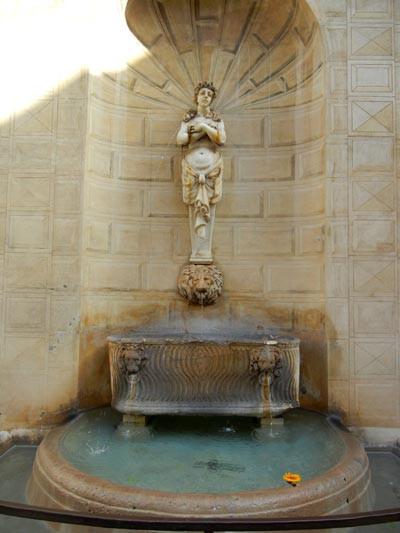
La maratona continua…e ValDi cammina..cammina…
The Marathon goes on…and ValDi walks…walks
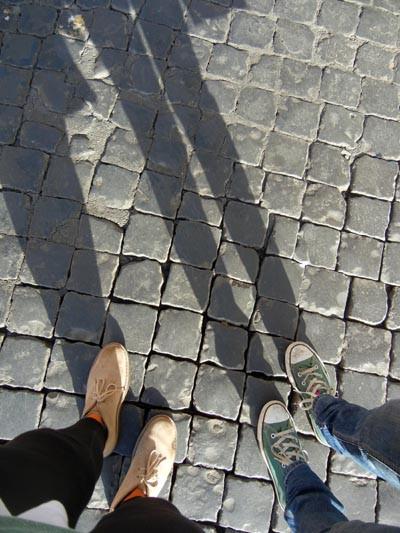
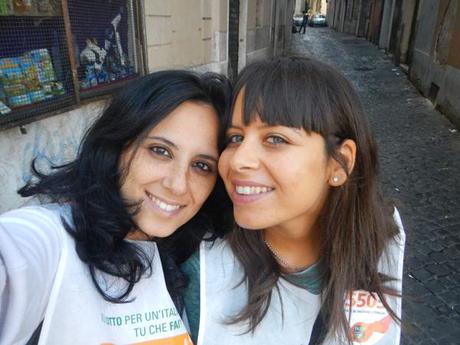
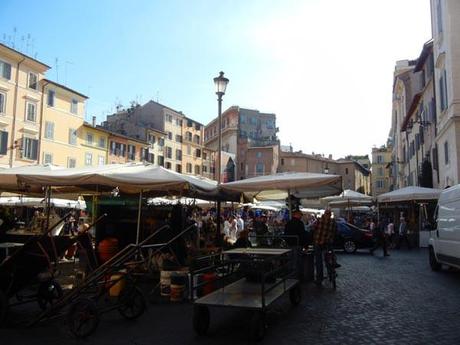
5- Piazza Farnese
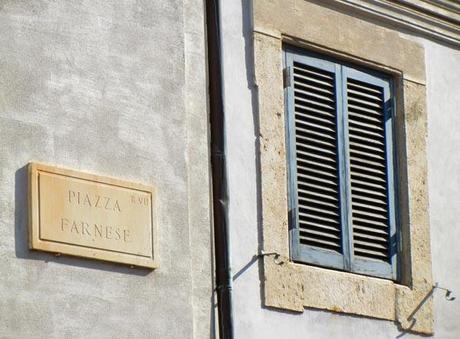
Anche per la quinta tappa le protagoniste sono due:
- Giulia Farnese, appartenente alla nota famiglia, il cui omonimo palazzo domina la piazza, è famosa per essere stata l’amante di papa Borgia.
- Brigida, dama di corte, si trasferì a Roma dalla lontana Svezia per dedicarsi ad opere pie, penitenze e preghiere per il ritorno di papa Avignone. Fu lei a fondare l’ordine del SS Salvatore, le cui religiose sono conosciute come “brigidine”. Alla figura della dama sono collegate la chiesa ed il convento di Santa Brigida (1303-1373).
The protagonists of the fifth stop has it that are two:
- Giulia Farnese, part of the famous family, whose namesake building dominates the square, is known for being the mistress of Pope Borgia.
- Bridget, lady of the court, she moved to Rome from the far Sweden to engage in good works, penances and prayers for the return of Pope Avignon. She founded the Order of the Most Holy Saviour, whose religious are known as “Bridget”. The figure of the lady is connected to the church and the convent of Santa Brigida (1303-1373).
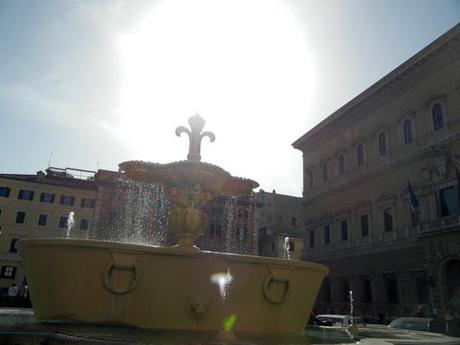
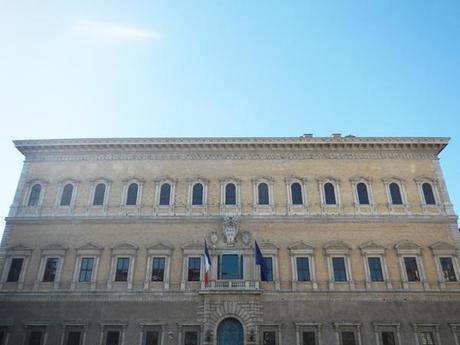
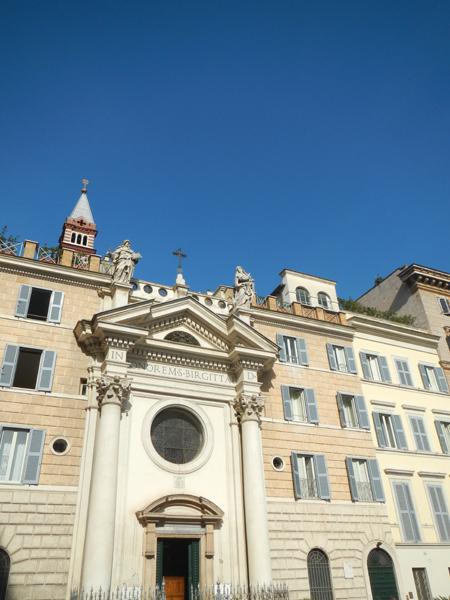
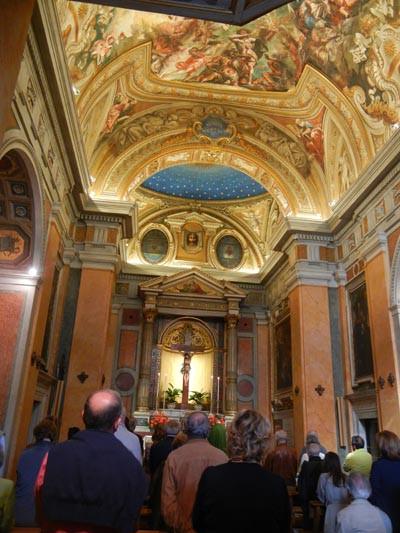
6- Piazza dei Satiri
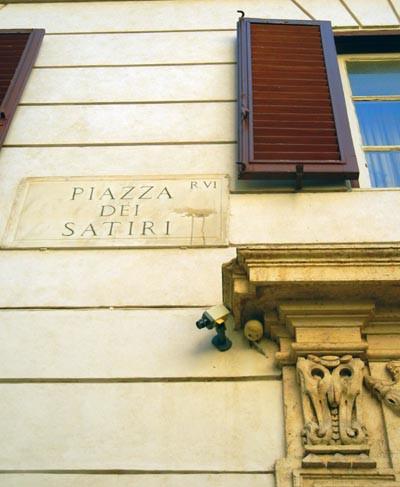
A Venere era dedicato il Tempio che Pompeo costruì nel 55 a.C. per aggirare la legge che impediva la costruzione di teatri in muratura. La legge consentiva infatti solo la costruzione di teatri in legno in prossimità di luoghi di culto. Pompeo edificò il Tempio su un podio rialzato, una gradinata di accesso in foma semicorcolare che fungeva da cavea con i posti a sedere e una grande scena antistante. Notate come i palazzi ricalcano l’andamento circolare della cavea…
To Venus was dedicated the Temple built in 55 BC by Pompeo to circumvent the law that prevented the construction of theaters in masonry. In fact, the law allowed only the construction of wooden theaters near places of worship. Pompeo built the Temple on a raised podium, a staircase to access foma semicorcolare that served as auditorium with seating and a big scene in front. Notice how the buildings modeled on the circular shape of the auditorium …
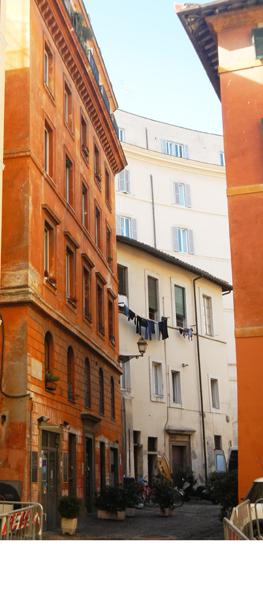
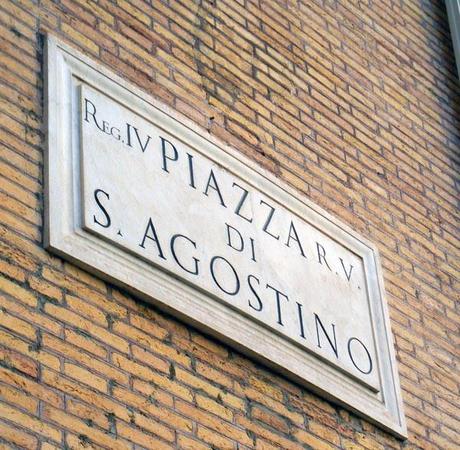
Qui, nella Chiesa di Sant’Agostino, troviamo una splendida opera del Caravaggio: La Madonna dei Pellegrini…di cui vi abbiamo già parlato nel nostro post dedicato a Caravaggio a Roma… http://viaggiandovaldi.wordpress.com/2011/03/27/caravaggio-a-roma-gratis/ . La Chiesa ospita inoltre la statua della Madonna del Parto e la tomba di Santa Monica (madre di Sant’Agostino), oltre ad essere l’unica chiesa ad ospitare le tombe delle cortigiane che l’avevano frequentata da vive…come Fiammetta per esempio, amante, tra gli altri, del Cardinale Cesare Borgia (poi Papa Alessandro VI).
Sulla Piazza affaccia anche la Biblioteca Angelica, del 1604, prima biblioteca ad essere aperta al pubblico in Europa.
Here, in the Church of St. Augustine, there is a splendid work of Caravaggio: The Madonna of the Pilgrims…we have already discussed about it in our post dedicated to Caravaggio in Rome … http://viaggiandovaldi.wordpress.com/2011/03/27/caravaggio-a-roma-gratis/. The church also houses the statue of the Madonna del Parto and the tomb of Santa Monica (mother of St. Augustine), as well as being the only church to house the tombs of the courtesans who had frequented by live … as Fiammetta for example, lover, among others, of the Cardinal Cesare Borgia (later Pope Alexander VI).
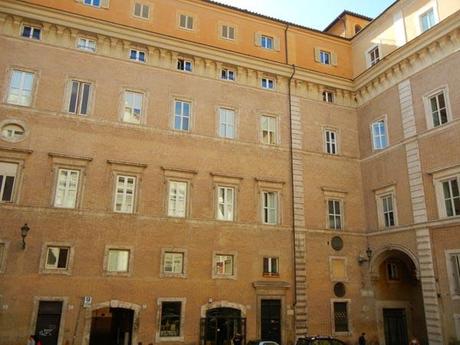
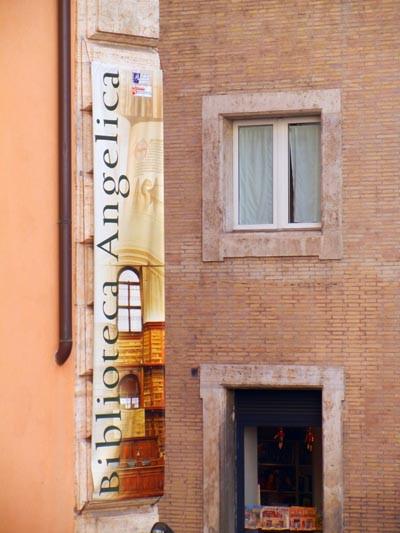
8- Piazza della Minerva
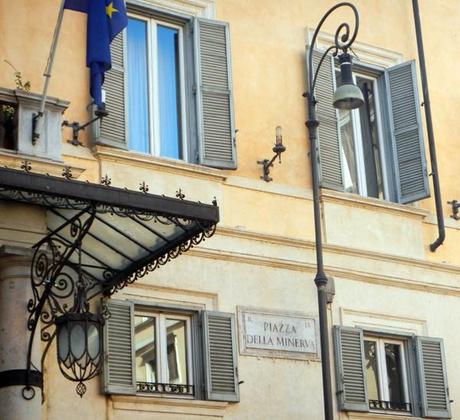
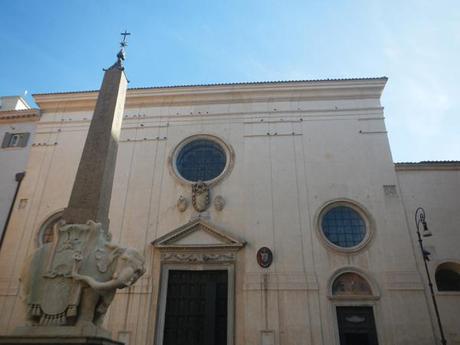
Nella Piazza che prende il nome dal Tempio dedicato da Pompeo a Minerva Calcidica, si trova la Chiesa Santa Maria Sopra Minerva, dove sono custodite le spoglie di Santa Caterina da Siena. All’intreno, una tavola di Antoniazzo da Romano che raffigura la processione delle “ammantate” ovvero le “bisognose”. Da non tralasciare la Tomba di Suor Maria Raggi, realizzata dal Bernini.
In the Square, which takes its name from the temple dedicated to Minerva Chalkidikiby by Pompeo, there is the Church of Santa Maria Sopra Minerva, where there are the remains of St. Catherine of Siena. All’intreno, a work of Antoniazzo Romano depicting the procession of the “ammantate” or the “needy.” Do not miss the tomb of Sister Maria Raggi, designed by Bernini.
Già che vi trovate sulla piazza date un’occhiata alle targhe sulla facciata della Chiesa che segnano il livello raggiunto dalle acque del Tevere durante le diverse esondazioni e all’Obelisco che si trova nel centro della Piazza…di cui potete trovare la storia nel nostro post sugli Obelischi: http://viaggiandovaldi.wordpress.com/2011/04/10/gli-obelischi-egiziani-e-non-a-roma-con-viaggiandovaldi/
Have a look at the facade of the Church ehere there are indicated the levels reached by the Tiber river during different flooding and the Obelisk located in the center of the square … which you can find the story in the our post on Obelisk: http://viaggiandovaldi.wordpress.com/2011/04/10/gli-obelischi-egiziani-e-non-a-roma-con-viaggiandovaldi/
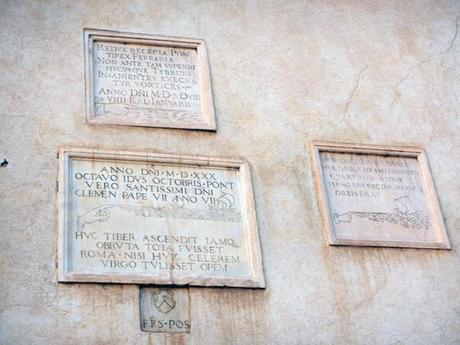
9- Via del Pie’ di Marmo
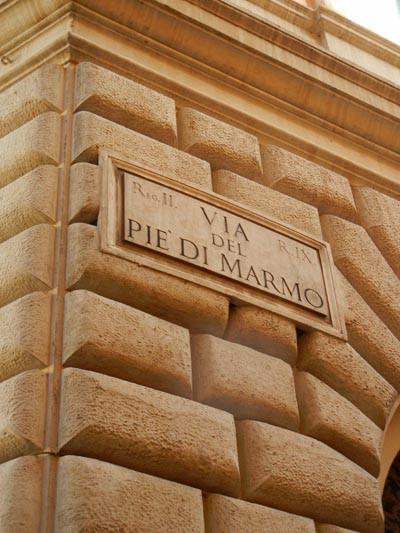
Camminando su Via del Pie’ di Marmo , all’improvviso sulla destra (venendo dalla precedente tappa di Piazza della Minerva) ecco un bel piedone di marmo. Ritrovato a metà del ’500, si ritiene appartenga ad una statua della dea Iside collocata, insieme a quella del consorte Serapide, nell’Iseo Campense (Tempio di Iside nel Campo Marzio).
Nel 2011 il piedone è stato restaurato dal FAI di Roma.
Walking on the Via Pie ‘di Marmo, suddenly on the right (coming from the previous stage of Piazza della Minerva) there is a beautiful foot of marble. Found in the middle of the ’500, it is considered to belong to a statue of the goddess Isis placed, along with that of her consort Serapis, Isei Campensis (Temple of Isis in the Campus Martius).
In 2011, the big foot was restored by the FAI in Rome.
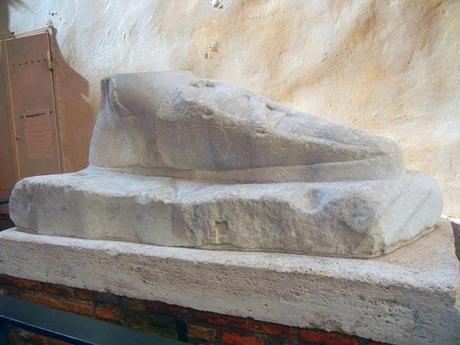
10- Piazza Santi Apostoli – Palazzo Colonna
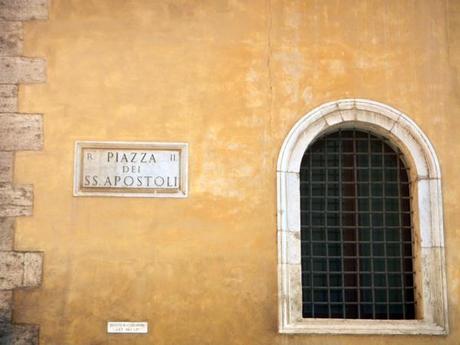
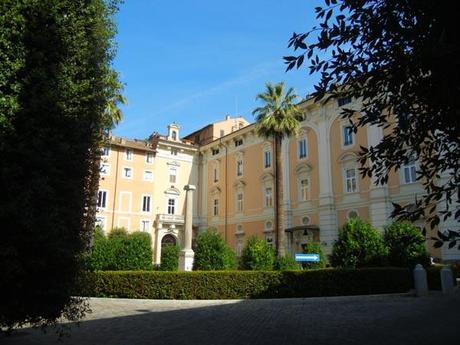
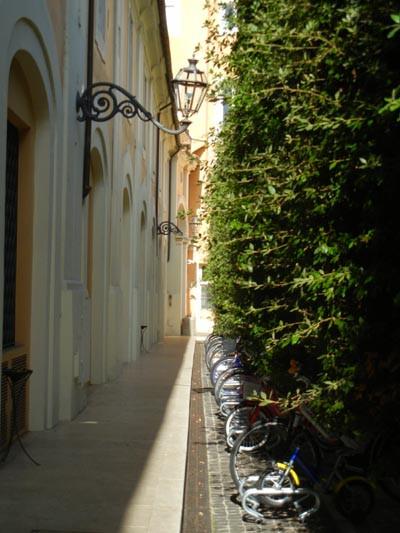
Questa volta sono tre le donne protagoniste di Palazzo Colonna, tappa n°6:
- Vittoria Colonna, poetessa e amica-musa di Michelangelo, dopo la morte del marito Ferdinando Francesco D’Avalos, colmò il profondo dolore dedicandosi agli altri e alla meditazione religiosa.
- Maria Mancini, nota per il suo amore impossibile con il re di Francia Luigi XIV, divenne parte della gloriosa famiglia Colonna sposando il principe Lorenzo Onofrio Colonna. Nonostante i tre figli, il matrimonio, completamente privo di sentimento reciproco, si concluse bene presto. La donna intraprese a quel punto una vita inquieta, di vagabondaggio.
- Isabelle, principessa di Paliano. Dama di corte, donna di politica, si ritagliò un ruolo decisivo nella lotta alla nobiltà scismatica lefebvriana.
L’appartamento al piano terra del Palazzo è stato intitolato a lei.
This time, are three female protagonists of the Palazzo Colonna, in the stop 6:
- Vittoria Colonna, poet and friend-muse of Michelangelo, after the death of her husband, Ferdinando Francesco d’Avalos, filled up the loss dedicating to others and devoting to religious meditation.
- Maria Mancini, known for his impossible love with the king of France, Louis XIV, became part of the glorious Colonna family by marrying Prince Lorenzo Onofrio Colonna. Although the three children, marriage, completely devoid of feeling each other, ended well soon. The woman started to that point a restless life of wandering.
- Isabelle, Princess of Paliano. Court lady, a woman of politics, played a decisive role in the fight against schismatic Lefebvrian nobility.
The apartment on the ground floor of the building has been named after her.
11- Piazza Venezia
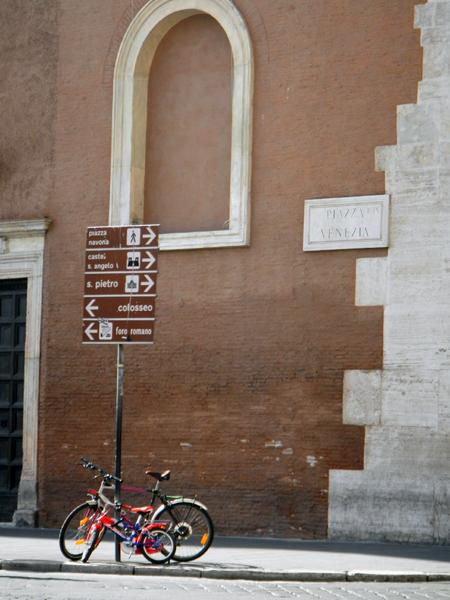
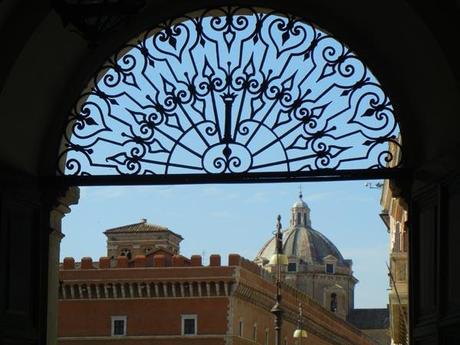
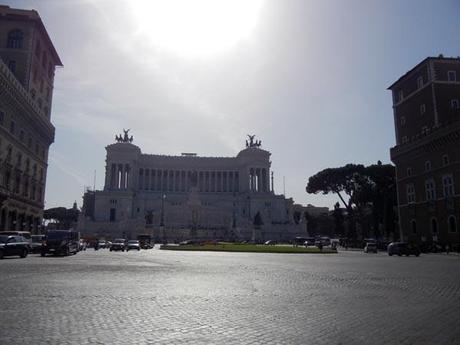
3 le donne legate a questa tappa:
3 women linked to this stage:
Letizia Ramorino, che si affacciava dal balcone di Palazzo Bonaparte (angolo con Via del Corso), costruito in maniera tale che lei potesse curiosare, ma senza essere vista!
Letizia Ramorino, which overlooked from the balcony of Palazzo Bonaparte (corner of Via del Corso), built in such a way that she could look around, but without being seen!
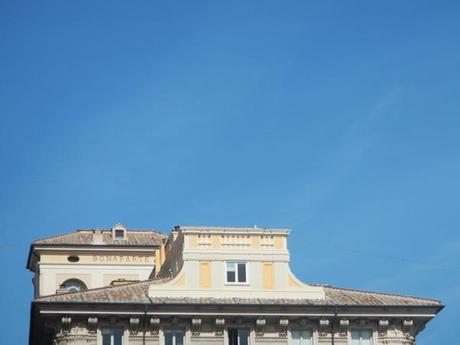
Madama Lucrezia, unica donna tra le statue parlanti…il suo busto troneggia sul lato sinistro di Palazzo Venezia. Per saperne di più date un’occhiata al nostro post sul tema: http://viaggiandovaldi.wordpress.com/2011/03/19/le-statue-parlanti-di-roma/
Madama Lucrezia, the only woman among the talking statues … his bust stands on the left side of the Palazzo Venezia. To learn more see our post on the topic: http://viaggiandovaldi.wordpress.com/2011/03/19/le-statue-parlanti-di-roma/

Vannozza Cattanei, una delle più famose cortigiane di Roma, amante del Cardinale Borgia (Papa Alessandro VI), con cui ebbe 4 figli. La sua lapide è conservata nell’atrio della Basilica di San Marco.
Vannozza Cattanei, one of the most famous courtesans of Rome, mistress of Cardinal Borgia (Pope Alexander VI), with whom he had four children. His tombstone is kept in the Basilica of San Marco.
12- Via delle Botteghe Oscure

Siamo quasi alla fine e la tappa numero 6 è dedicata al Conservatorio di Santa Caterina dei Funari che oggi ospita il Museo Nazionale Romano della Crypta Balbi.
L’istituto fu realizzato da Sant’Ignazio per accogliere le figlie delle prostitute che rimanevano protette all’interno della Confraternita delle Vergini Miserabili Pericolanti per sette anni. Solo in occasione della festa di S. Caterina veniva loro concesso di uscire in processione affinchè potessero essere notate e chieste in matrimonio. Era tuttavia proibito loro di parlare.
We are almost at the end and the stop number 6 is dedicated to the Conservatorio di Santa Caterina dei Funari which now the base of the National Museum of Roman Crypta.
The institute was created by St. Ignatius to accommodate the daughters of prostitutes. They remained protected within the Brotherhood of the Virgin Miserables Pericolanti for seven years. Only on the feast of St. Catherine was given to them the opportunity to go out in procession so that they could be noticed and asked in marriage. However, it was forbidden to speak.
Attraversando il Ghetto…destinazione tappa n°13
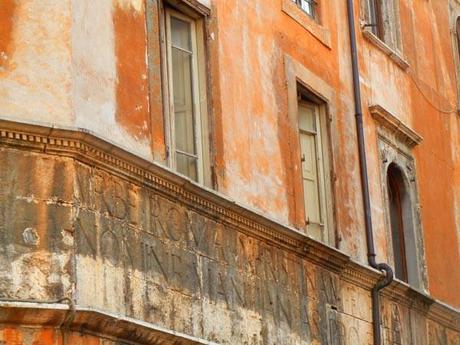

13- Piazza Cenci
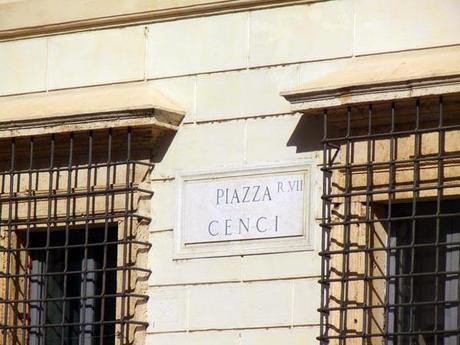
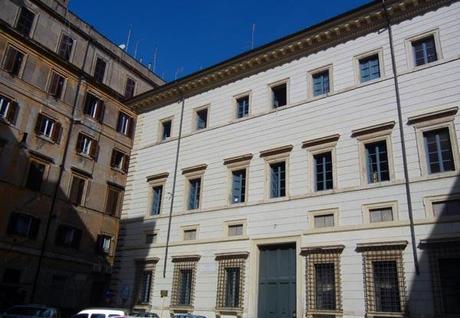
Il Palazzetto Cenci ci ricorda Beatrice Cenci, che a soli 16 anni fu condannata a morte per parricidio. Provate ad incontrare il suo fantasma su Ponte Sant’Angelo a mezzanotte!
The Cenci Palace reminds us of Beatrice Cenci, who when just 16 years old, was sentenced to death for patricide. Try to meet her ghost on Ponte Sant’Angelo at midnight!
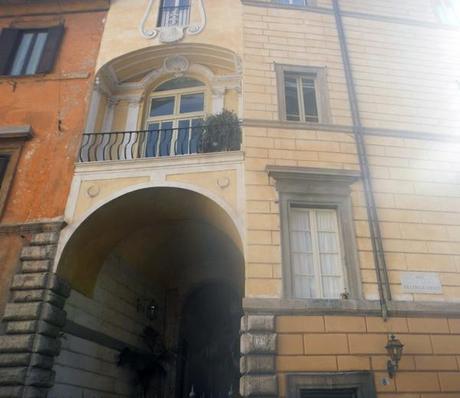
14- Portico d’Ottavia
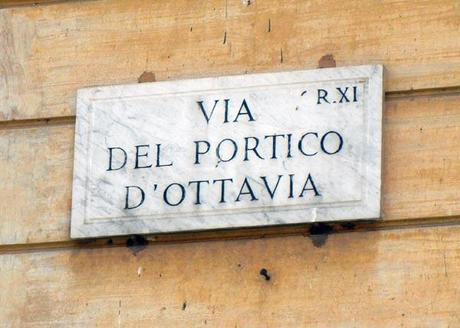
Ottavia (69 a.C. – 11 a.C.), sorella di Ottaviano Augusto e moglie di Marco Antonio, è la protagonista di questa tappa. Donna dal forte temperamento, era molto amata da suo fratello che le dedicò il monumento, di cui oggi possiamo ammirare i resti dell’ingresso centrale, rifacimento di epoca severiana (II sec. d.C.). Camminate lungo il percorso che vi condurrà a costeggiare il Teatro Marcello…
Ottavia (69 BC – 11 BC), sister of Ottaviano Augusto and Marco Antonio’s wife, is the protagonist of this stage. Women with a strong temperament, she was much loved by his brother, who dedicated the monument, of which today we can see the remains of the central gate, reconstruction of the Severan period (II century AD).. Walk along the path that will lead you to skirt the Theatre of Marcellus …
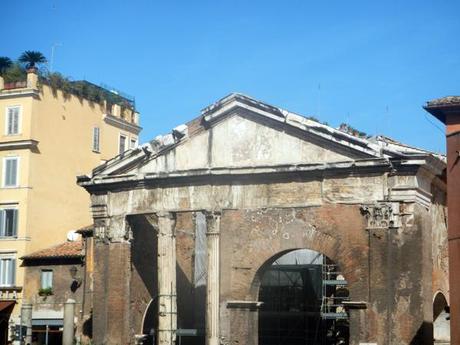
Ultimi scorci di Roma prima di raggiungere il traguardo.
Last glimpses of Rome before reaching the finish line.
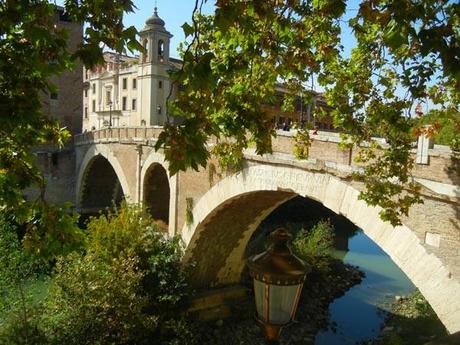
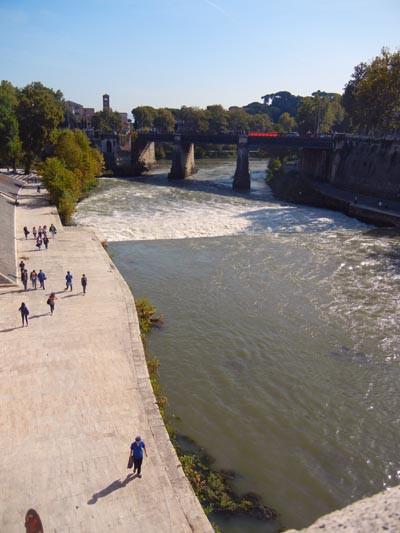
15- Piazza Santa Cecilia
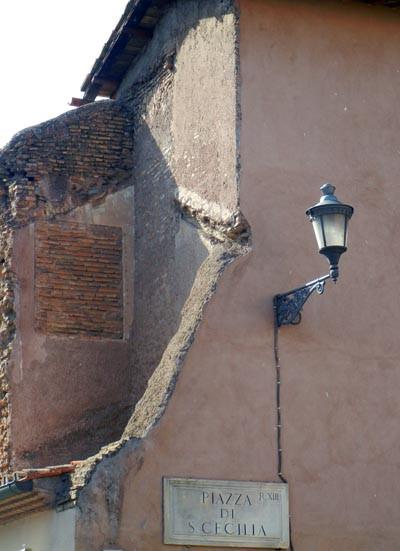
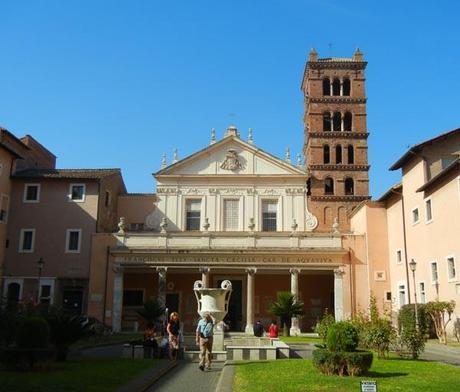
La Basilica di Santa Cecilia è stata costruita secondo la leggenda sulla dimora di Cecilia, martire del III secolo d.C. Cecilia fu condannata a morte per essersi convertita al Cristianesimo, influenzando anche il marito Valeriano, che si convertì a sua volta.
E’ patrona della musica, dei musicisti e dei cantanti.
The Basilica of Santa Cecilia was built, according to the legend, on the home of Cecilia, martyr of the III century AD Cecilia was condemned to death for converting to Christianity, influencing her husband Valerian, who converted in turn. She is the patroness of music, musicians and singers.
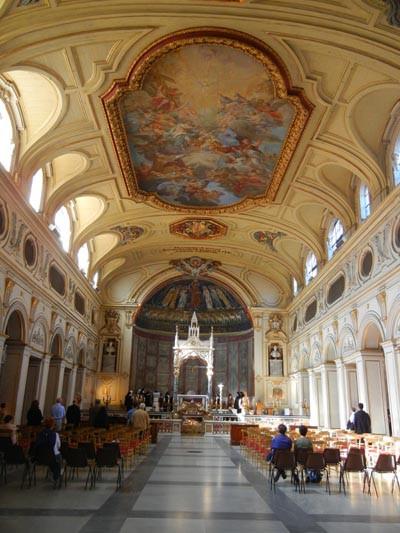
La prossima visita….in bici ovviamente..
Next time…obviously by bycicle!


